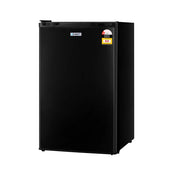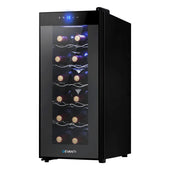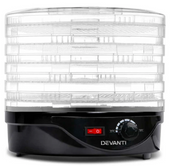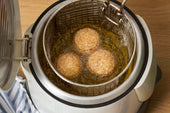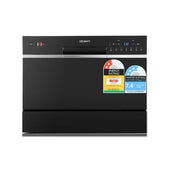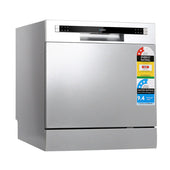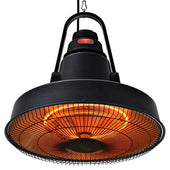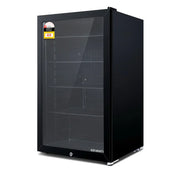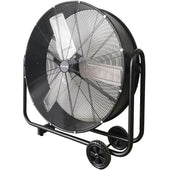The Role of Ice in Beverage Perfection
Ice plays a fundamental role in elevating both the flavour and experience of beverages. Beyond merely cooling a drink, it acts as a subtle modifier of taste and texture. Cold temperatures enhance the crispness of carbonated drinks while suppressing overly sweet notes, creating balanced flavours. The type and size of ice further contribute to its role, with slow-melting, clear cubes preventing dilution while retaining chill longer.
Certain drinks, like cocktails, rely on ice to release aromatic compounds through controlled dilution. In presentations, crystal-clear ice enhances visual appeal, reflecting craftsmanship. During days, these factors make ice essential in crafting the perfect beverage, underlining its significance as more than just frozen water.
The Science Behind Ice Formation
Ice formation begins when water cools to its freezing point, typically 0°C under standard atmospheric conditions. As temperature drops, water molecules lose kinetic energy, forming hydrogen bonds that create a crystalline lattice. This structure is responsible for ice’s solidity and transparency when impurities are excluded. Ice makers enhance this process by purifying water and controlling freezing rates.
Precise cooling techniques ensure layers freeze uniformly, avoiding trapped air bubbles. Variations in pressure and mineral content also influence freezing temperature. To achieve perfect clarity, modern ice machines mimic natural freezing methods, removing dissolved air and other particulates. This meticulous control shapes ice’s texture and visual appeal.
Why Ice Shape and Clarity Matter
The shape and clarity of ice play a critical role in the overall drinking experience, from both a practical and aesthetic perspective. Ice shapes influence the melt rate; large, dense cubes melt more slowly than crushed or irregular pieces, keeping drinks colder for longer and preventing excessive dilution. This is particularly important for maintaining the intended flavour balance of cocktails or spirits.
Clarity impacts not only presentation but quality. Cloudy ice often contains trapped air and impurities, which can affect taste. Clear ice, achieved through slow freezing or directional freezing methods, is denser and purer, ensuring clean, uncontaminated cooling while enhancing visual appeal in any beverage.
A Brief History of Ice Production
For much of history, ice was a luxury reserved for the wealthy, harvested manually from frozen lakes and rivers in cold climates. This natural ice was transported in insulated warehouses, often over vast distances, with significant challenges in preventing melting. By the early 19th century, advancements like insulated iceboxes revolutionised storage in homes, making chilled drinks more accessible.
The introduction of mechanical refrigeration in the mid-19th century marked a turning point. Innovations from inventors like John Gorrie, who designed one of the first artificial ice-making machines, paved the way for commercial ice production. These technological strides transformed ice from a rarity into a household staple.
How Modern Ice Makers Work
Modern ice makers operate through a precise, automated sequence designed to produce uniform and high-quality ice. First, water is pumped into a freezing tray, where it is evenly distributed to form consistent ice cubes. A refrigeration coil rapidly cools the tray, causing the water to freeze layer by layer. This gradual freezing process helps eliminate trapped air, resulting in crystal-clear ice.
Once the ice is fully formed, a heating element slightly warms the tray, loosening the cubes. A motorised arm or ejector pushes the ice into a storage bin. Sensors monitor the bin’s capacity, pausing production when it is full.
Different Types of Ice: Choosing the Right Fit for Your Drink
The type of ice used can significantly influence the drinking experience, from texture to temperature. Understanding the distinct characteristics of each type of ice will help in selecting the most suitable one for various beverages.
- Cubed Ice: Known for its slow melting rate, it is ideal for spirits like whisky or cocktails that benefit from minimal dilution.
- Crushed Ice: Perfect for tropical drinks such as mojitos, its rapid cooling effect makes for a refreshing sip.
- Nugget Ice: Chewy and softly textured, it suits soft drinks and iced teas.
- Clear Ice: Prized for its purity, it enhances presentation in high-end drinks like craft cocktails.
Selecting the right ice complements the beverage's flavour, temperature, and aesthetics effectively.
The Impact of Water Quality on Ice Production
The quality of water significantly influences the clarity, taste, and structural integrity of ice. Impurities, such as minerals, dissolved gases, or organic particles, can lead to cloudy or brittle ice cubes. Hard water, which contains high mineral concentrations like calcium and magnesium, often results in cloudy ice due to trapped air and mineral deposits. Conversely, softened or filtered water produces clearer, aesthetically pleasing ice.
Different types of impurities may also affect the freezing process. Dissolved solids lower the freezing point of water, extending freezing time and potentially causing uneven ice formation. This highlights the importance of using purifiers or filtration systems in ice machines, which ensure optimal water quality and consistently superior ice results.
The Thermodynamics of Cooling: How Ice Chills Drinks
Ice cools drinks based on principles of thermodynamics, specifically heat transfer and phase change. When ice enters a warmer liquid, heat energy flows from the liquid to the ice, balancing the temperature difference. This energy transfer triggers the melting process, where solid ice absorbs heat and transforms into liquid water.
The specific heat capacity of the liquid influences how much energy is required to lower its temperature. Additionally, elevated surface area exposure, such as with smaller or crushed ice, accelerates cooling. The efficiency of cooling depends heavily on the initial temperature of the ice and the total quantity used.
Innovations in Ice Maker Technology
Modern advancements in ice maker technology have revolutionised the way ice is produced, ensuring efficiency, clarity, and ease of use. Smart ice makers now utilise sensors to detect water quality, enabling consistent production of crystal-clear ice. Innovations like dual freezing zones allow for diverse ice shapes, from nuggets to spheres, catering to beverages of all types.
Key innovations include:
- Portable Design: Compact ice makers are designed for smaller spaces and easy transportation.
- Energy Efficiency: Eco-friendly models reduce energy consumption significantly.
- App Integration: Smart units can be controlled via mobile apps, offering remote operation.
These advances optimise functionality and redefine convenience, making perfect ice more accessible than ever.
The Future of Ice in the Beverage Industry
Advancements in ice-making technology are set to revolutionise how beverages are served and enjoyed. Manufacturers are exploring precision-engineered ice, designed to enhance drink aesthetics and maintain optimal temperatures with minimal dilution. Emerging trends point to environmentally friendly ice makers that use less energy and water.
With bar culture evolving, the demand for unique ice shapes like spheres, diamonds, and custom imprints has grown, adding a new dimension to drink presentation. Innovations in flavour-infused ice are gaining popularity, allowing beverages to change taste profiles as the ice melts.
Smart appliances equipped with features like app control and real-time monitoring also pave the way for more efficient, tailored ice production.
Tips for Maintaining Ice Maker Efficiency at Home
Efficient upkeep of an ice maker involves regular care and attention to ensure optimal performance. Key maintenance practices include:
- Cleaning the appliance regularly: Remove mineral build-up by using a mix of warm water and vinegar or specialised ice machine cleaner.
- Checking the filter: Replace water filters as recommended by the manufacturer to prevent blockages.
- Monitoring water quality: Always use filtered or distilled water to avoid residue issues.
- Defrosting when necessary: Prevent ice blockages by conducting periodic defrosting.
- Inspecting components: Examine hoses, seals, and connections for leaks or wear.
Consistency in these habits ensures longevity and peak functionality of your unit.
The Environmental Impact of Commercial Ice Production
Commercial ice production has environmental implications, influenced by energy consumption and water usage. Ice makers often require significant electricity to freeze water, and the energy source plays a pivotal role in determining their carbon footprint. Transitioning to renewable energy sources can mitigate this impact.
Water usage is another concern, as inefficient machines may waste resources. Innovations in water recycling within ice machinery can help address this. Disposing of old ice makers also contributes to electronic waste, requiring sustainable practices.
Businesses are increasingly adopting energy-efficient and eco-conscious technologies, but widespread adoption remains gradual due to cost considerations and infrastructure challenges.
Exploring Cultural Preferences for Ice in Drinks
Cultural attitudes towards ice in beverages vary greatly across the globe, shaping how ice makers are utilised in diverse markets. In the United States, for example, generously iced drinks are the norm, with restaurants and bars often filling glasses to the brim with ice before pouring the drink. Conversely, in many European countries such as France or Italy, minimal use of ice is preferred, as it is thought to dilute the flavour of the beverage.
In Asian cultures, particularly in Japan, ice is often considered an art form. Bars may use hand-carved ice spheres or cubes to enhance the aesthetic and sensory experience of high-end cocktails. Meanwhile, in countries like India, the use of ice in drinks is less common in domestic settings due to historical concerns about water quality, though it is increasingly popular in urban areas.
These preferences influence the demand for specific ice makers, with businesses adapting machines to produce different sizes, shapes, and textures of ice to cater to local tastes.
Crafting the Ultimate Drinking Experience with Gourmet Ice
Gourmet ice elevates the drinking experience by enhancing flavour, presentation, and temperature control. These premium ice forms are characterised by their clarity, size, and shape, often tailored for specific beverages. Bars and enthusiasts utilise sphere or block-shaped ice to reduce dilution in spirits like whisky or cocktails. Innovations in ice-making technology ensure purer ice by eliminating air bubbles and impurities.
The visual appeal of transparent ice adds sophistication to drinks, while precise freezing methods maintain consistent cooling throughout. Gourmet ice enriches the sensory experience, blending functionality with aesthetics to complement high-quality ingredients and refined drink preparation methods.














